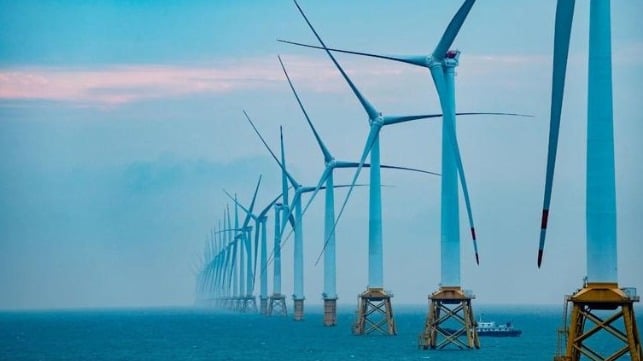China Now Has Nearly Half of the World's Offshore Wind Capacity
44 percent of the world's offshore wind turbine capacity is installed in Chinese waters, and more is coming, according to a new report

China has maintained its leadership in the global race for new offshore wind turbine installations despite an expected decline in annually added capacity, according to the latest numbers from the World Forum Offshore Wind (WFO).
The WFO's annual report shows that nearly seven gigawatts of offshore wind capacity was added in China in 2022, a substantial drop compared to 12.7 GW of new capacity that was added to the national grid in 2021.
The plunge was attributed to the expiration of a favorable Chinese feed-in tariff, which in 2021 encouraged project developers and investors to rush to commission projects before the deadline. Those who finished construction were able to lock in a premium offshore wind feed-in tariff of 0.75 – 0.85 RMB/kWh for 20 years, safeguarding them from price competition.
Despite the drop, China still maintained leadership in new wind capacity in a year that saw a total of 9.4 GW of global offshore wind capacity added, a substantial drop compared to 15.6 GW in 2021. The new capacity pushed global installed offshore wind to 57.6 GW, up from 48.1 GW.
During the year, China expanded its position as the world’s largest offshore wind market by far with 25.6 GW of installed capacity - more than the UK with 13.6 GW, Germany with 8 GW and the Netherlands with 3 GW combined. 44 percent of the world’s total offshore wind capacity is now installed in Chinese waters.
The report shows that 42 new offshore wind farms went into operation worldwide last year, 29 of which were installed in China, five in Vietnam and two in Japan. The UK, South Korea, Italy, France, Spain and Germany commissioned one wind farm each.
“It is excellent to see that important new offshore wind markets such as France and Japan have successfully installed their first commercial-scale offshore wind farms. We will see many more countries from around the world join the offshore wind industry over the next few years,” said Gunnar Herzig, WFO Managing Director.
France and Japan installed their first large-scale offshore wind farms ever. France welcomed the completion of the Saint Nazaire wind farm, with a capacity of 480 MW, and Japan started up the Akita/Noshiro Port wind farm, with a capacity of 140 MW.
New offshore wind installations are set to reach a record 18.4 GW in 2023, and mainland China will account for over half of the total. This year, six markets will add over 1 GW, including Taiwan, which will install over 2 GW of new capacity for the first time.

that matters most
Get the latest maritime news delivered to your inbox daily.
Annual offshore wind construction is forecast to climb to 45.7 GW in 2030, underpinned by the mature markets of China, the UK, Germany and the Netherlands. Emerging markets like the U.S, Taiwan, France, South Korea, Poland and Japan will make significant contributions, while Norway, India, Spain and Greece will install their first projects later in the 2020s.
In the decade after 2030, more new markets will contribute to newbuilds, including Colombia, Brazil and Sweden. From 2031 to 2035, new installations are projected to average 45.6 GW per year, peaking at 48.2 GW in 2035 when global offshore wind installations are expected to reach 519 GW.
